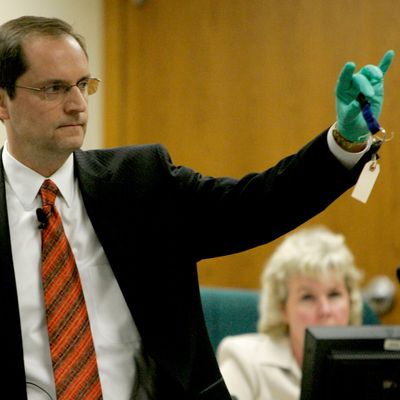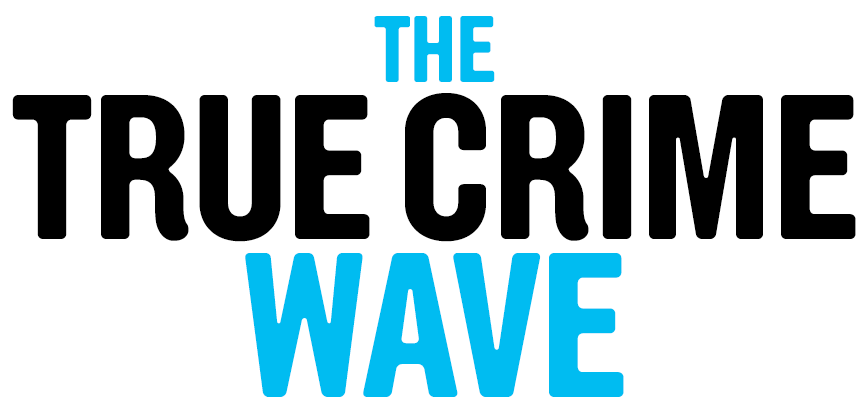
All week long, Vulture is exploring the many ways true crime has become one of the most dominant genres in popular culture. Sarah Weinman is the author of the forthcoming The Real Lolita: The Kidnapping of Sally Horner and the Novel That Scandalized the World.
Fifteen years ago, I left Manhattan expecting that I would work as a forensic scientist. It was what I believed I wanted, having spent the prior two years studying at John Jay College of Criminal Justice, one of the oldest forensic-science graduate school programs in the country.
But when I returned to New York in 2005, I was not a forensic scientist. I was a writer, largely writing crime fiction and true crime. It wasn’t for lack of trying: The year before, I’d interviewed with every major forensic biology lab on the East Coast of the United States and Canada. None of them hired me. Serious soul-searching uncovered the reason: I was a macro thinker in a micro world, more interested in cases and people and psychology than in repetitive laboratory analysis.
What I learned in school made me a better journalist and a better writer because forensic science is, as scientific disciplines must be, about critical thinking and objective analysis. But it also made me less patient with how the field is depicted in film and television, and more appreciative when books and programs take the time to get it right.
With the more recent boom in true-crime programming, and the proliferation of podcasts ranging from highly investigative to loosely comedic, I wanted to know what forensic-science experts — including former classmates and instructors of mine at John Jay — felt about the increased attention to real-life crime. Was it a boon to their work, or a hindrance?
They try to avoid watching or listening to true-crime programs.
The forensic scientists I talked to tended to shy away from current true-crime programming, in part because they had to devote their time to their actual work. Kristy Sekedat, manager of the trace-evidence unit lab for the Michigan State Police (and my classmate at John Jay College), did listen to every episode of Serial. What she took away from the podcast is that its listeners, many of whom were new to true crime, “aren’t just thinking about the case at hand, but about avenues and evidence not explored. They are thinking about post-conviction or coming up again for retrial.”
This cultural shift in the way we think about crimes as a result of post-Serial true-crime programming, Sekedat explained, is that it “can stifle the work that you’re doing as a bench-level analyst. You start thinking, ‘What might I get later, analyzed 10 years down the road? What if I look at the evidence again with new information?’ These questions can keep you from looking at just what you have right now. Because if someone on a podcast gets a retrial, it puts everything under the microscope (no pun intended).”
What Sekedat brings up is an offshoot of the well-discussed phenomenon known as the CSI Effect. As Carolyn Gannett, a criminalist and instructor with the California Criminalistics Institute, told me by email, “Juries began to expect science to enter into every aspect of a case being argued in court. That’s simply not realistic.”
email.
The bigger problem is bad interpretation of science.
Recent articles and books by Pamela Colloff and Radley Balko highlight the dangers of junk science, and how overstating expertise and qualifications can lead to wrongful convictions. Between such public-interest pieces, true-crime programs like The Last Defense, and recent reports about high error rates for techniques that analyze bite marks, hair, and fiber, it might seem as if forensic science is continuing to move toward a “DNA or bust” mentality. That’s because forensic DNA analysis, beginning as far back as the mid-1980s, used mathematical probabilities from the get-go in ways trace-evidence-based techniques did not.
But Ralph Ristenbatt, a forensic science professor at Penn State University (and one of my instructors at John Jay), urged a different way of thinking about these older, supposedly debunked analyses, one that moves away from the broader cultural idea that such forensic techniques are unequivocally wrong. “It’s not the science, it’s who is doing the science,” he said. “These are useful techniques. It’s the people who are doing the work who are overextending themselves. In many cases, they don’t know any better. They don’t know limitations, and they don’t know where to stop. Bite marks are still an incredibly powerful tool. There is nothing wrong with hair analysis.” But in the wake of the FBI’s 2015 report that the vast majority of its hair examiners overstated evidence and made errors, “good luck finding hair examiners anymore. Now when you have a DNA technician looking at hair, they just cut it in a tube.”
Journalism’s interpretation filter is also an issue.
True-crime shows and podcasts aren’t the only ones flattening the complexity of forensic science into easy-to-grasp narratives: journalists do so too. They say DNA or trace evidence “matches” a suspect when scientists can’t be so definitive (“is consistent with” is the term I was taught to use). They confuse medical examiners, who are licensed pathologists, with coroners, who are elected officials and can have any background, even nonmedical ones. They reach for outrage when a more measured reporting approach is more accurate. This conflict arises, according to a 2016 paper by Loene Howes and Nenagh Kemp, because of a “need to communicate expert opinion in a way that is both scientifically accurate and also comprehensible to nonscientists.”
Sekedat described an example of this communication gap. When she worked for the New York City Police Department’s crime lab, she and her then-boss, Lisa Faber, were interviewed in a 2007 New Yorker article by Jeffrey Toobin on the CSI Effect. Sekedat and Faber thought the interview [which quoted Faber only] had gone well, but in their view, the resulting piece was a different story. “We were so disappointed when we read the article because he dissed trace evidence,” Sekedat recalled. “We had poured our hearts out about how awesome the field was … A layperson would have read the article and thought, that’s fascinating to get an inside look at forensic science. I honestly canceled my subscription, that’s how upset I was.” Sekedat’s experience made her understandably wary. “Don’t try to put your own spin on it, make it sound fun or sexy,” she said. “This is science.”
Ultimately, bridging the practice of forensic science and the public’s need for story may be difficult.
We crave narrative, order from chaos, a mystery solved, good guys winning out over the bad ones. But science, and forensic science, should be more neutral, and thus more nuanced. The true crime that gets it right, like the investigative podcast In the Dark from APM Reports, burrow deeply into the messiness of the criminal-justice system, letting the egregiousness — and the bad science — speak for itself, so that the outrage is earned, and can be acted on, not stoked and manipulated.
Ristenbatt expressed pessimism that the divide can be smoothed over: “It’s been this way since 1987. It hasn’t gotten better, it’s gotten worse.” Criminalists who start with science and know a lot about many forensic disciplines “are few and far between.” Sekedat did stress, though, that the stuff true-crime podcasts and television shows are made of are the “crazy cases,” the anomalies. “It doesn’t happen every day that you misidentify or have someone on the stand saying more than they supposed to do. You only hear about the bad stuff, not the good success stories.”





